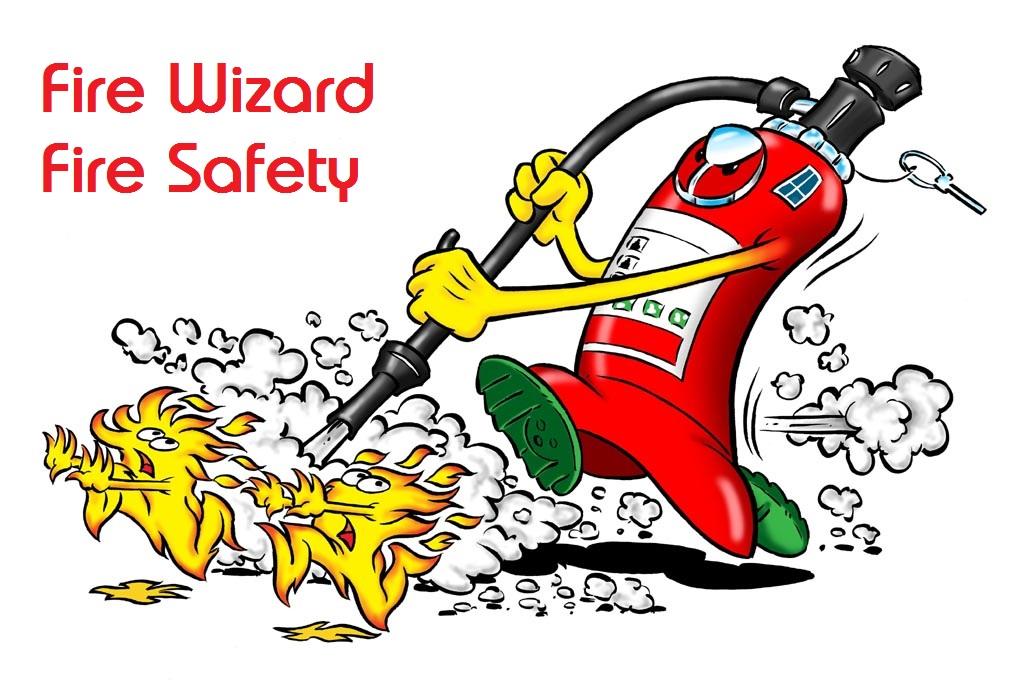-
Posts
2,570 -
Joined
-
Last visited
Everything posted by AnthonyB
-
Your points are valid and why every revision of BS5266 reduces the acceptance of borrowed lighting more & more and if you have an escape route and open area that at any time of use would require you to switch the electrical lighting on there is a good chance you will need emergency lighting.
-
Absolutely no legal requirement, unlike for example a first aid kit. Doesn't mean it's not a bad idea to have one as long as it's big enough to be of any real use.
-
Great, part of the problem is the number of organisations and people servicing that don't know what they are doing making it difficult for those that do as they undercut.
-
It's a flooded cut price market - do a lot of research before taking the plunge. You should of course be qualified to carry out the work. Safelincs are a great retail firm but are not importers/manufacturers and there are several who support the trade. However as a new small volume customer you may get better rates from them than if you went direct to the manufacturer as they have the advantage of volume of scale discount that you wouldn't so it's well worth getting their trade list.
-
Open areas require 0.5 lux anti panic lighting, escape routes (corridors, stairs, etc) 1 lux on the centre line
-
You are responsible for a fire risk assessment and determining if you require EL as you are both an employer and a person having control of all or part of a premises by way of your lease. Most rented office suites have their own meter and distribution board which you are responsible for - the lighting is under your control as a result including the EL need
-

LEDs on emergency bulk head light on all the time.
AnthonyB replied to a topic in Emergency Lighting
You can do it in house, it's simply putting them on test with the test switches and checking that they illuminate/stay illuminated correctly. -
You need to speak to a solicitor who specialises in property law. The issue is that from what you say there appears to never have been a formal legal agreement for the flat occupiers to access the shop yard for escape purposes (known as a Deed of Easement, Means of Escape license & various similar terms). Without it, the owner of the land is within their rights to block access (with notice) even if it causes fire safety issues. Four options usually exist: - Negotiate a Deed of Easement with the other owner, this usually involves paying them a fee or a small rent - Provide a new different escape route (rarely practicable as the lack of other escape options is why route over other premises existed in the first place. - Provide mitigation for the lack of alternative exit (sprinklers, smoke vents, alarms, etc) - Court remedy: Some cases have been brought where a premises has enjoyed the use of a route through adjoining land without objection for a number of years and been granted a de facto easement by the Court.
-
Only if your travel distances require the rear exit from the extent of the shop floor and only if the works required are reasonable
-
As you are the Responsible Person in a licensed premises you must carry out a written Fire Risk Assessment. If you don't feel competent in this you need to use an external provider, preferably third party certified (BAFE SP205-1, Warrington FIRAS). Guidance to help you carry it out yourself is here: https://www.gov.uk/government/publications/fire-safety-risk-assessment-small-and-medium-places-of-assembly & here if you have living accommodation on site: https://www.gov.uk/government/publications/fire-safety-risk-assessment-sleeping-accommodation
-
Depends on the age of the building, the as built information available and a general 'feel' for the premises. Some I'm happy to stay put with only a part survey (usually because service penetrations are not correctly sealed) as the walls & floors are to a suitable specification, others a full check of everything is needed
-
Can't argue with any of it other than trying to flog the flat owners a fire blanket and foam extinguisher (the latter would be the wrong type anyway) It's cheaper and more practicable than pulling all the ceilings and walls down to uprate the fire resistance and replace all the front doors.
-
They aren't going to do anything as they aren't in the actual wall penetration
-
Your older beacons will be strobe, but new will be LED and not a risk. Photosensitive epilepsy is quite rare, do you know if any of these pupils are actually sensitised?
-
Ideally the fire brigade should have been called even if you were going to tackle it yourself. They could then have carried out post fire ventilation with their PPV fans (if needed) and advised. Most fire effluent contains chemicals or particulates that are harmful to the lungs and body & the area should be well ventilated before re-entry. Whilst with a small extinguished fire it won't kill you it's not good for you either, especially if anyone has a pre-existing respiratory medical condition
-
If you want an alternative to an alerter, then you may need to consider Visual Alarm Devices as part of your fire alarm system, which as being used as a primary warning should conform to EN54-23. Whilst area coverage is subject to risk assessment the usual compliant provision is to all toilets and any office/room where a person relying on visual warning may work alone (it's anticipated that in larger rooms with other staff present they would alert the hearing impaired person).
-
That would be down ultimately to the risk assessment, however the usual presumption is that you would, otherwise how would people know where they are and how would people know that what otherwise looks like a handy storage recess actually needs to be kept clear.
-
The Housing Act 2004 also applies to the property and unlike the Fire Safety Order does apply inside domestic premises. If not changing the front door or allowing fitting of the alarm is assessed as a Category 1 hazard by the Council then enforcement action can be taken against you
-
Nothing is absolute if a convincing case can be made. I wouldn't want it myself as for it to be effective it would affect your premises' security
-
An inward opening door can normally be used for up to 60 persons. Building Regulations do not allow escape routes through other occupancies (nor would you want this from a security aspect) so they shouldn't be doing this in the first place.
-
I'm guessing it was this: http://www.bre.co.uk/eventdetails.jsp?id=15147 Seems to give you the required competence as would be required by legislation. Perhaps your employer or their clients need a third party certified repair & install service?
-
They are different to the BWF ones but still look useful and handy!
-

Are refurbished fire extinguishers allowed in a business environment?
AnthonyB replied to a topic in Fire Extinguishers
Why not? The legal requirement is a CE mark and a well established manufacturer has a range of extinguishers without a kitemark. Also prestige polished finish extinguishers are fine but not kitemarked. I've personally watched CO2 extinguishers being overhauled and refurbished along the production line and have seen nothing to concern me. Most started out as kitemarked anyway! I prefer kitemarked product but don't treat non kitemarked stuff as unsuitable.- 15 replies
-
- refurb
- refurbished extinguishers
-
(and 1 more)
Tagged with:
-
The following category combinations exist: M - Manual (Call points & sounders). L5 - Life Risk specific detection (no call points, sometimes no sounders) L5/M - Life Risk specific detection (with call points and sounders) L4 - Escape route detection L3 - As L4 plus rooms opening onto escape routes L2 - As L3 plus risk specific additional areas L1 - Everywhere (almost!) L1 to L4 do not require the /M suffix as they MUST always include call points and sounders P2 - Property risk specific detection (must be monitored, longer standby times, no call points, may have no or limited sounders) P1 - Property protection detection everywhere (almost - also must be monitored, longer standby times, no call points, may have no or limited sounders) P2/M & P1/M Property protection systems also incorporating call points and sounders to meet the minimum life safety requirements You can also mix P & L systems such as P2/L4 which would be a building with manual call points and sounders, escape route detection for life safety and then some additional detection for a property protection purpose along with remote monitoring.
-
Flat front doors still require closers. Flat internal doors used to require closers, but this was dropped in revisions to Building Regulations as they were almost universally removed by residents. You don't need to fit them and if you have an older flat you no longer need to retain them.

